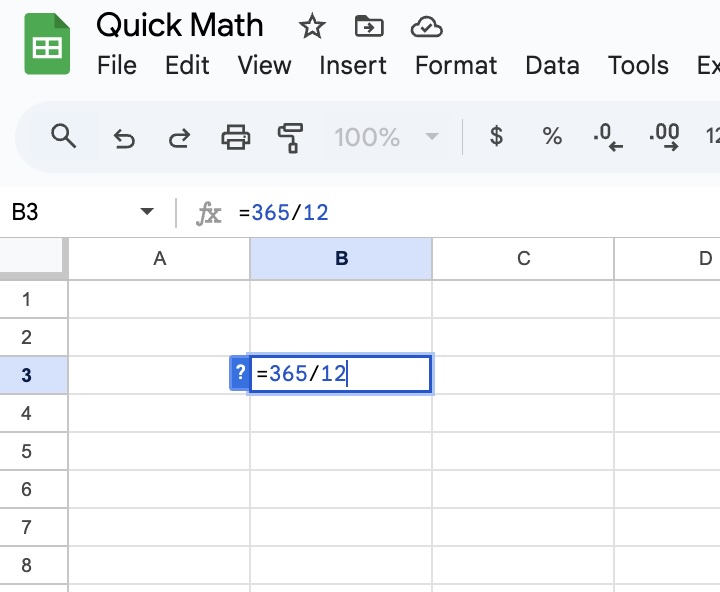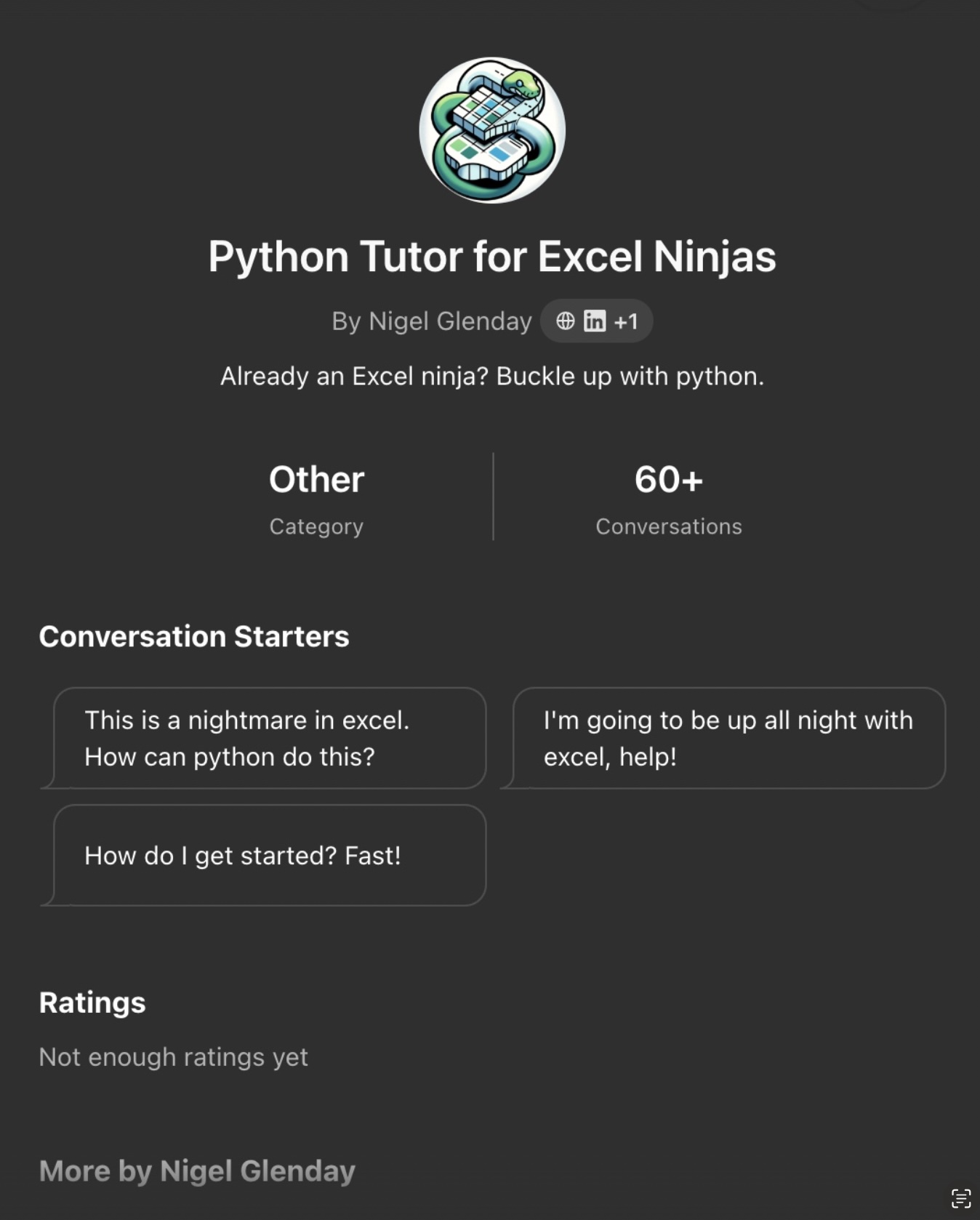================================================================================
C:\> CD .. Return to Index
================================================================================
[March 28, 2025]
Blub's Paradox in Finance
Why Your Excel-Brain Can't See Better Tools
* * *
It's 11pm.
You have 5 missed calls.
The phone stopped ringing long ago. Your model has 37 tabs. The nested IF statements are a Jenga tower on top of which you nervously balance the last of twelve closing parentheses. The conditional array formulas stretch onto the next screen. An entire tab of #REF!s. The balance sheet that hasn't tied for days. Is that 0.0 or (0.0)? And the only thing you can do once you hit F9: pray.
Welcome to Blub's paradox.
This is the mental trap from knowing just one tool too well.
Coined by Paul Graham in his essay "Beating the Averages", the paradox describes a cognitive bias involving hypothetical programming language called "Blub" with middling capabilities.
When Blub programmers look at less capable languages, they easily spot what they perceive as flaws. When these same programmers look at more powerful languages, they fail to realize they're looking "up" the capability curve and instead simply see "weird" languages with features that seem unnecessary or strange. The programmer becomes paralyzed by their deep knowledge of a single tool, unable to see the utility in lesser nor superior languages.
Said differently, they can't see what they are missing.

[Figure 1: the Blub hole]
Finance has a tool monopoly: the spreadsheet.
They are nothing if not intuitive, graphical and the beneficary of four plus decades of feature rollouts. Spreadsheet mastery has been a Wall Street rite of passage since VisiCalc was put on floppy. A cultural model as much as a financial one.
And its formula syntax is essentially a simple programming language.
But the Excel power user knows all too well that this...
=A1+B1
...can quickly descend into...
=MAX(100000000,MIN(1000000000,IF(D2/C2>0.2,D2*15,IF(D2/C2>0.1,D2*(10+(D2/C2-0.1)*50),B2))))
But here's what that Excel power user doesn't realize:
You're already a programmer.
Your 37-tab model is a quasi-programming project. Data logic behind a built in UI.
You've mastered variables (cell references), functions (AVERAGE, SLOPE), conditionals (IF, CHOOSE), text manipulation (TEXT, UPPER), even loops (SUMPRODUCT, array formulas). You understand data types, error handling, why structure matters. You debug complex logic chains and optimize for performance. All while fearing the BSOD.

[Figure 2: Death by a thousands calcs]
Not any programmer, a blub programmer.
Blinded by your spreadsheet mastery, you wave off lesser tools. Your HP12C - or, Lord help you if you showed up with one of these, your TI-82 from your calculus class.
"Why bother with these ancient artifacts when I've got a spreadsheet.", you scoff ignoring their speed, portability and handiness.

[Figure 3: Excel as Calculator]
But python? Pshsh. Overkill. That's for quants. I'm not a coder. What is all this for anyway?
And there it is - Blub blindness staring right back at you. You dismiss python out of hand because:
1. I'm not a coder - Like "I'm not good at math" or "I'm not a writer"
2. It's too complex - "Why learn all that syntax when I can copy right?"
3. The learning curve feels steep - "I don't have time"
4. You don't see the immediate benefit - "My spreadsheets work fine"
What you don't see is how Python might change your life:
└─That 37-tab model? A single clean script with modular functions.
└─The hours spent debugging formulas? Replaced with human readable text and error handling.
└─Those circular references? Gone with proper dependency management.
└─Version control? Built-in, no more "Model_v7_FINAL_ACTUALLY_FINAL_2.xlsx"
Your Excel formulas are already code - with severe limitations. You're in a language designed for basic visual calculations, not scalable, repeatable analysis.
So you're trapped.
This is Blub's paradox. It's the hidden cost of avoiding complexity.
But here's the good news: springing the trap isn't difficult. In fact, it makes things simpler.
The nasty looking running average you just wrote in Excel?
=AVERAGE(OFFSET(C1, MAX(ROW()-ROW($C$1)+1-20,0), 0, MIN(20,ROW()-ROW($C$1)+1), 1))
...just became this...
.rolling(window=20).mean()
You don't even realize that you are already a few steps from breaking Blub's paradox.
One of the most used packages (code-speak for 'add-ons' in Excel-world) is called Pandas, developed by Wes McKinney, then a junior data analyst at AQR Capital Management, a Greenwich, CT hedge fund, precisely because he lived the pain of wrangling data in a spreadsheet witnessing his colleagues also losing their minds in the process.
He saw much of his work dealt with time series (e.g., prices, economic indicators, etc) and how ill-suited spreadsheets were for the task. Especially as data got big. Wes saw through Blub's paradox and knew he needed a more capable tool. He developed Pandas in his spare time before eventually open-sourcing it.
Pandas emerged from the Excel pain of financial analysis - not putting a man on mars - developed by someone who lived through the same 11pm spreadsheet nightmare that haunts analysts everywhere. Since then, Pandas has been supplanted by Polars as the state-of-the-art.
For a long time, the gap between 'Excel user' and 'Python coder' felt huge. But it's narrowing — fast.
Enter LLMs (Large Language Models). // DEBUG: Spreadsheet AI achieved sentience
The Blub's paradox killer.
LLMs have demolished the barrier to upskilling. The cost of acquiring technical knowledge is plummeting.
'AI as Tutor' was my first LLM use case (after haikus), including making a custom GPT to teach me python based everything I already knew about Excel.

[Figure 4: Python Tutor for Excel Ninjas]
I've learned that LLMs are most useful when they are given overwhelming, shock-and-awe level context. See Braindump Prompting.
Write system prompts that explain exactly, and at stream of consciousness length, who you are and what you are trying to achieve. See braindump prompting.
Whats more is the IDE and the spreadsheet are on a collision course - with early signs everywhere:
└─Superworker.ai (formerly SheetsLang.ai) - Alpha stage AI assistant bringing code-like capabilities to spreadsheets.
└─xlwings lite - Lightweight tool for controlling Excel with Python
└─Anaconda Python in Excel - Brings Anaconda's Python distribution directly into Excel
└─Microsoft Python in Excel - Official Microsoft integration for running Python in Excel cells
Sadly, for the Google Sheets crowd (of which I've become a devoted convert), the options are maddeningly slim. The last real attempt (Neptyne) is defunct (though the github is still there). According to founder xlwing's Felix Zumstein, xlwings server works with Google Sheets (haven't tried this yet).
So what comes next is the Cursor-fication of the spreadsheet.
Imagine of a spreadsheet that:
└─ Understands the entire context and meta-data of your model (what is linked to what, what drives what, multiple tabs, etc)
└─ Auto-completes not simply formulas but entire sections of the model (e.g., sees you are building a balance sheet and will auto-complete the supporting receivables schedule)
└─ Refactors nasty formulas into something clean and human readable
└─ Includes indentation and comments within formula fields
└─ Generates documentation explaining what the model actually does
This isn't 'chatting' with your data.
This is vibemodeling.
And it will be the end of the Blub's paradox for the finance team.
It's what happens when you stop staring at gnarly formulas and start thinking about your objective — with context-aware tools that understand your intent, not just your inputs.
Think not a python add-on to Excel, but the Excel add-on to Cursor.
In this world, the analyst doesn't get replaced. They just start sleeping better - and hopefully a few less anphitamies.
If you're working on this, let's jam.
Until then, it's 12:30AM and Blub's paradox lives on another night. Your friends are long gone - and your balance sheet check is off by (0.00075).
[Subscribe to more posts like this]
================================================================================
C:\> CD .. Return to Index
================================================================================



